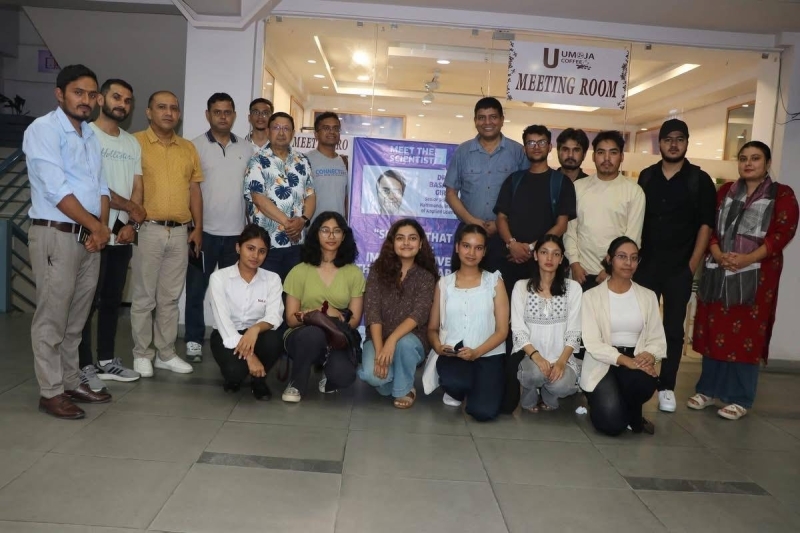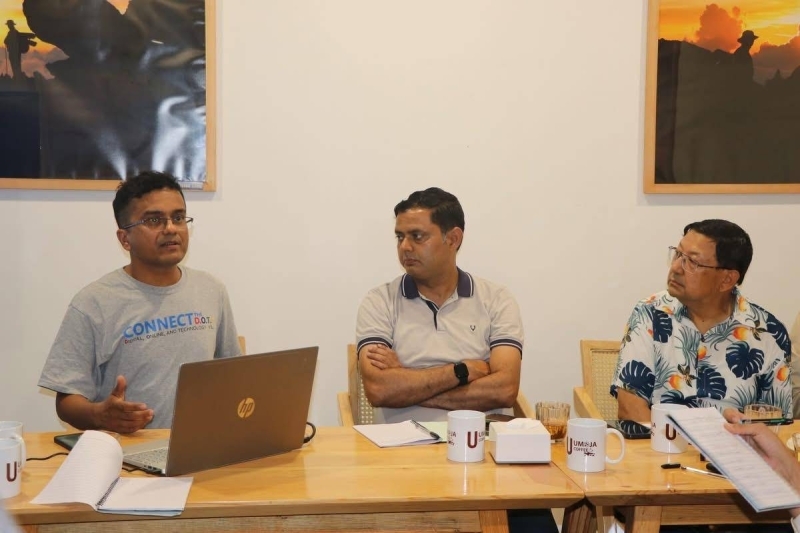
Nepali scientist shares insights on afforadable health solutions at Journalists’ Forum
Dr. Basant Giri, a prominent Nepali scientist, delivered a powerful message of locally-driven, life-saving innovation at the seventh “Meet the Scientist” event hosted by the Nepal Forum of Science Journalists (NFSJ).
Addressing science journalists, researchers, and educators under the theme “Science That Serves: Impacting Lives Through Research in Nepal,” the Senior Scientist from Kathmandu Institute of Applied Sciences (KIAS) detailed his impactful work tackling critical health issues facing Nepal and similar nations.
Dr. Giri, author of 50 research papers published predominantly in top-tier (Q1) scientific journals-some with impact factors reaching 50-focused on four key research areas: combating counterfeit drugs and pesticides, developing smartphone microscopy, analyzing face mask efficiency, and assessing iodine levels in salt.
He opened with stark statistics on substandard and falsified medicines: “13.6% of medical products are substandard or falsified in low- and middle-income countries, 13.7% in Asia, 18.7% in Africa,” Dr. Giri stated. “Counterfeit drugs are a global problem causing serious illness or even death in addition to wasting individual’s time, money and health.” He highlighted the immense cost: over 100,000 deaths annually (mostly in developing countries) and an economic impact estimated between $10 to $200 billion.
 In response, Dr. Giri showcased KIAS innovations, including a groundbreaking low-cost paper test made from handmade paper to detect fake antidiabetic drugs. Costing only Rs. 50 per test, it requires no highly skilled personnel. “This enables decentralized manufacturing and provides an easy, quick, reliable, and rugged low-cost tool for on-site detection,” he explained. He also presented AI-Assisted Smartphone Microscopy for parasite detection.
In response, Dr. Giri showcased KIAS innovations, including a groundbreaking low-cost paper test made from handmade paper to detect fake antidiabetic drugs. Costing only Rs. 50 per test, it requires no highly skilled personnel. “This enables decentralized manufacturing and provides an easy, quick, reliable, and rugged low-cost tool for on-site detection,” he explained. He also presented AI-Assisted Smartphone Microscopy for parasite detection.
Significantly, Dr. Giri revealed concerning findings from a citizen-science project on iodized salt. Utilizing school students (grades 7-10) to collect samples and college teachers to test them using WHO methods, the study found household salt contained 54.8 ± 16.3 mg/kg of iodine. “This corresponds to a mean daily iodine intake of 547 μg derived from salt… This amount is 3.6-fold higher than the WHO recommended value of 150 μg for adults,” Dr. Giri reported, indicating potential over-iodization.
Reflecting on a decade of independent research in Nepal, Dr. Giri offered an inspiring perspective: “Science in Nepal is not easy-but it’s possible, powerful, and essential. It demands creativity, resilience, and collaboration-and above all, a belief that knowledge can transform lives.”
NFSJ President Rajan Pokhrel thanked Dr. Giri, stating his insights were “really helpful to communicate the science to the general public about the scientific research in simple and understandable language.” Chhatra Karki, Vice President of the World Federation of Science Journalists (WFSJ), emphasized the event’s importance: “Journalists should be aware about scientific facts and findings to make story reliable. Communicating science to the public is the role of science Journalists. Such program should be organized regularly to enhance the capacity of science journalists.”
Former NFSJ President Rajendra Khanal applauded Dr. Giri for conducting “great research in Nepal despite funds constraints,” and for sharing his findings directly with journalists. The event underscored the vital link between robust scientific research, effective science communication, and tangible improvements in public health.
Source: thehimalayantimes.com